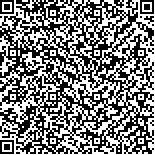高政,杨婷,王晓菊,等.运动想象训练联合经颅直流电刺激对脑卒中偏瘫患者上肢功能的影响[J].中华物理医学与康复杂志,2021,43(7):611-614
扫码阅读全文

|
| 运动想象训练联合经颅直流电刺激对脑卒中偏瘫患者上肢功能的影响 |
|
| |
| DOI:10.3760/cma.j.issn.0254-1424.2021.07.007 |
| 中文关键词: 脑卒中 偏瘫 运动想象训练 经颅直流电刺激 上肢功能 |
| 英文关键词: Stroke Hemiplegia Motor imagery training Transcranial direct current stimulation Upper limb functioning |
| 基金项目:南京市医学科技发展项目(YKK17122) |
|
| 摘要点击次数: 5919 |
| 全文下载次数: 6496 |
| 中文摘要: |
| 目的 观察分析脑卒中偏瘫患者实施运动想象训练联合经颅直流电刺激(tDCS)的临床治疗效果及其对患者上肢功能的影响。 方法 纳入符合标准的脑卒中偏瘫患者90例,按随机数字表法分成常规组(采用tDCS治疗)和联合组(采用运动想象训练联合tDCS治疗),每组45例,所有患者在常规康复训练的基础上,常规组选取IS200型智能电刺激仪行tDCS治疗,每日1次,20 min/次,6次/周,共治疗4周;联合组患者则接受tDCS治疗后,立即进行运动想象训练,每日1次,40 min/次,每周运动想象训练6 d,共治疗4周。分别于治疗前和治疗4周后(治疗后),采用上肢Fugl-Meyer量表(FMA-UE)和香港版偏瘫上肢功能测试(FTHUE-HK)对2组患者的上肢运动功能和偏瘫上肢的使用能力进行评定;检测患者上肢的表面肌电图(sEMG)采集上肢做最大主动肩前屈、伸肘时三角肌前部、肱三头肌肌腹的肌电信号,信号处理内容采用均方根值(RMS)和积分肌电值(iEMG)来表示,评估患者的患肢肌力。 结果 治疗前,常规组和联合组患者的FMA-UE[(17.8±6.9)和(17.7±6.8)分]、FTHUE-HK评分[(2.9±0.9)和(2.8±0.7)分]及表面肌电图指标RMS[(2.5±0.5)和(2.4±0.3)μV]和iEMG值[(24.5±10.8)和(23.3±11.9)μV·s]组间比较,差异均无统计学意义(P>0.05);治疗后,2组患者的FMA-UE评分[(26.5±13.4)和(38.6±11.9)分]、FTHUE-HK评分[(3.2±0.5)和(4.2±0.3)分]及表面肌电图指标[RMS(4.3±1.1)和(6.8±0.9)μV;iEMG(35.7±7.5)和(44.3±6.9)μV·s]均较组内治疗前明显改善,且联合组改善情况显著优于常规组(P<0.05)。 结论 脑卒中偏瘫患者实施运动想象训练联合tDCS治疗,可进一步提高患者上肢运动功能,增强其肌肉力量。 |
| 英文摘要: |
| Objective To observe and analyze the clinical effect of combining motor imagery training (MIT) with transcranial direct current stimulation (tDCS) for improving the upper limb functioning of hemiplegic stroke survivors. Methods Ninety stroke survivors with hemiplegia were randomly divided into a conventional group (treated with tDCS) and a combination group (treated with MIT combined with tDCS), each of 45. The conventional group received 20min of tDCS using the IS200 intelligent electrical stimulator once daily, 6 times/week, for 4 weeks. The combination group received 40min of motor imagery training right after the tDCS treatment. Before and after the treatment, upper limb motor functioning was evaluated using the Fugl-Meyer assessment for the upper extremities (FMA-UE) and the Hong Kong version of a functional test for the hemiplegic upper extremity (FTHUE-HK). Surface electromyographs were recorded from the anterior deltoid and the triceps brachii muscles during maximum active shoulder flexion and elbow extension. The muscle strength of the affected limb was evaluated using the root mean square values of the integrated electromyograms (IEMGs). Results There were no significant differences between the groups before the treatment. Afterward, significant improvement was observed in the average FMA-UE scores, FTHUE-HK scores, surface EMG indexes and iEMG values in both groups. The improvement in the combination group was significantly greater than in the conventional group. Conclusion Combining MIT with tDCS can better improve upper limb motor functioning and muscle strength after a stroke survivors than tDCS alone. |
|
查看全文
查看/发表评论 下载PDF阅读器 |
| 关闭 |